Select Language
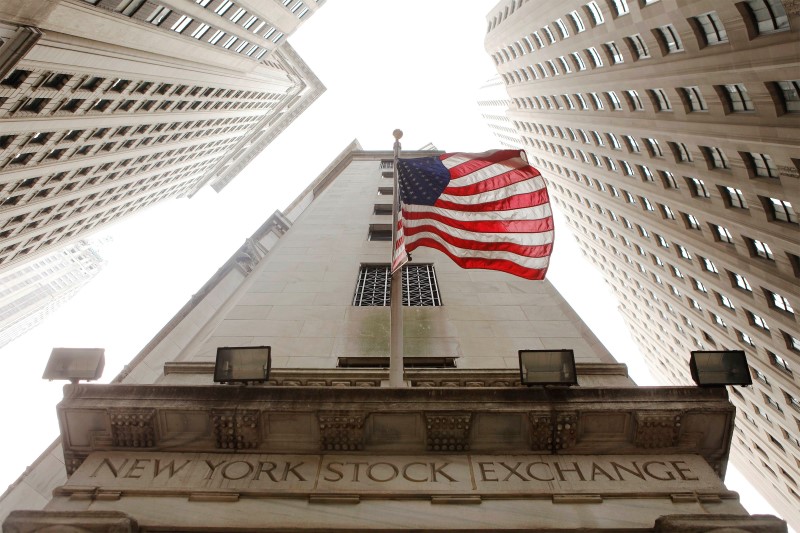
U.S. stock index futures edged higher Thursday, with investors assessing a raft of labor market data this week while awaiting more clarity over the Trump administration’s trade policies.
At 05:05 ET (09:05 GMT), Dow Jones Futures gained 80 points, or 0.2%, S&P 500 Futures rose 7 points, or 0.1%, and Nasdaq 100 Futures climbed 22 points, or 0.1%.
The main averages on Wall Street traded in narrow ranges Wednesday, amid uncertainty over the Trump administration’s trade policies as a United States deadline for "best offers" on trade came and went without any announcements.
Trump-Xi call, trade deals in focus
Germany’s new chancellor, Friedrich Merz, will hold face-to-face talks with U.S. President Donald Trump later Thursday, looking to stave off looming U.S. tariffs and sustain U.S. backing for Ukraine.
But the focus this week is on an expected call between Trump and Xi, which markets hope will help revitalize U.S.-China trade talks after Washington admitted they had stalled in recent weeks.
Trump called Xi “very tough” and a good negotiator, although no dialogue between the two had taken place.
Trump earlier this week made good on his threat to double steel and aluminum import tariffs to 50% from 25%, stoking concerns that he will also deliver on his threat of retaliatory tariffs on major U.S. trading partners.
Jobless claims add to labor data deluge
Sentiment has been hit by data which suggested that Trump’s tariff agenda was beginning to have an impact on the U.S. economy.
Both private payrolls growth and a tracker of the key services sector missed expectations, and a snapshot of the world’s largest economy from the Federal Reserve said activity had dropped as the levies put upward pressure on prices.
Minneapolis Fed President Neel Kashkari said on Wednesday evening that the labor market was showing some signs of slowing down, and that the Fed needed to remain in wait-and-see mode amid heightened economic uncertainty.
There is more labor market data to study Thursday, in the form of the latest jobless claims figures.
Economists anticipate that the weekly number of Americans filing for first-time unemployment benefits inched down to 236,000, down from 240,000 in the week ended on May 24.
This will largely serve as a precursor to Friday’s all-important monthly nonfarm payrolls report, which is projected to show that the U.S. added 130,000 jobs in May -- falling from 177,000 in April.
Broadcom to headline earnings slate
The number of major companies still to report quarterly earnings is rapid;y dwindling, but Broadcom (NASDAQ:AVGO) will headline Thursday’s slate of corporate results.
These numbers will be followed closely, with the semiconductor group potentially set to provide a fresh glimpse into the state of demand for cutting-edge artificial intelligence chips.
Some investors have flagged worries that businesses could be reining in spending on AI as they face up to a murky economic outlook, while others have raised questions over the necessity of the expenditures following the emergence of a low-cost model from China’s DeepSeek earlier this year. However, major tech companies have recently backed their plans to pour heavy investments into the nascent technology.
Crude steadies after gasoline stocks build
Oil prices steadied Thursday after recent losses as an outsized build in U.S. gasoline and distillate inventories raised demand concerns in the world’s largest economy.
At 05:05 ET, Brent futures rose 0.3% to $65.02 a barrel, and U.S. West Texas Intermediate crude futures climbed by 0.2% to $62.96 per barrel.
Both benchmarks dropped over 1% on Wednesday after government data showed that U.S. oil inventories shrank by a bigger-than-expected 4.3 million barrels in the past week.
But gasoline inventories grew 5.2 million barrels, much more than expected, while distillate stocks also grew by a healthy 4.2 million barrels.
The readings raised some questions over demand in the world’s biggest fuel consumer, especially heading into the travel-heavy summer season.
Ambar Warrick contributed to this article

European equity indices edged higher Wednesday ahead of the release of regional manufacturing activity data, but investors remain cautious amid trade uncertainty and in the build up to the latest European Central Bank meeting.
At 03:05 ET (07:05 GMT), the DAX index in Germany climbed 0.7%, the CAC 40 in France gained 0.4% and the FTSE 100 in the U.K. rose 0.1%.
Uncertainty over trade talks
European stocks have followed their Asian counterparts higher Wednesday, boosted by hopes that a trade deal could still be possible when U.S. President Donald Trump and Chinese leader Xi Jinping talk this week.
However, these gains are tentative, with trade tensions still elevated as Trump earlier signed a proclamation raising his tariffs on steel and aluminum to 50% from 25%, making good on his earlier threat, with the higher duties effective from Wednesday.
Additionally, Trump on Wednesday described Xi Jinping as a tough negotiator, amid the ongoing tariff rift between the two countries.
"I like President XI of China, always have, and always will, but he is VERY TOUGH, AND EXTREMELY HARD TO MAKE A DEAL WITH!!!," Trump wrote in a post on his social media platform, Truth Social.
Today is the deadline for U.S. trading partners to submit their "best offer" to avoid punishing import tax rates, and so far, only Britain has struck a preliminary trade agreement with the U.S. during Trump’s 90-day pause on a wider array of tariffs.
The European Union said earlier this week that it had yet to receive a letter from Washington asking for its best proposals on trade talks, a point duplicated by Japanese Chief Cabinet Secretary Yoshimasa Hayashi earlier Wednesday.
PMI data due ahead of ECB meeting
The European economic data slate centers around a series of manufacturing activity data from the region Wednesday, as investors await the latest policy-setting meeting of the European Central Bank, due for completion on Thursday.
There have been some signs of economic recovery in Europe, but from a low base, and eurozone consumer prices slowed to 1.9% last month, which is seen providing the ECB with room to cut interest rates by a quarter point once more, in what would be an eighth rate reduction in the past year.
However, where the ECB goes after this is open to debate as U.S. tariff uncertainty, heightened further by ambiguity over court rulings on the legality of the tariffs, makes the backdrop challenging as the ECB weighs the impact to business activity against implications for inflation further out.
Remy Cointreau sees weak sales in key markets
In the corporate sector, spirits group Remy Cointreau (EPA:RCOP) reported a smaller-than-expected drop in annual organic operating profit, reflecting weak sales in its key markets of China and the United States.
The French company also withdrew its mid-term goals and said sales would return to mid-to-single-digit growth during the next financial year.
Swedbank (ST:SWEDa) said that it is maintaining its return on equity target of at least 15% for the coming years, reaffirming a goal the Swedish banking group had set through 2025.
Airbus (EPA:AIR) will also be in the spotlight after Bloomberg reported China is reportedly contemplating an extensive order from the aircraft manufacturer, which could be finalized as early as next month.
Crude slips back from two-week highs
Oil prices slipped lower Wednesday, falling back from recent highs generated by increasing OPEC+ output and concerns that tariffs will hit global economic activity.
At 03:05 ET, Brent futures slipped 0.3% to $65.41 a barrel, and U.S. West Texas Intermediate crude futures fell 0.4% to $61.18 a barrel.
Both benchmarks climbed about 2% on Tuesday to a two-week high, driven by worries over supply disruption from Canadian wildfires and expectations that Iran would reject a U.S. nuclear deal proposal key to easing sanctions on the major oil producer.
Additionally, the Organization of the Petroleum Exporting Countries and allies, known as OPEC+, agreed to keep output increases in July at 411,000 barrels per day, which was less than some in the market had feared.
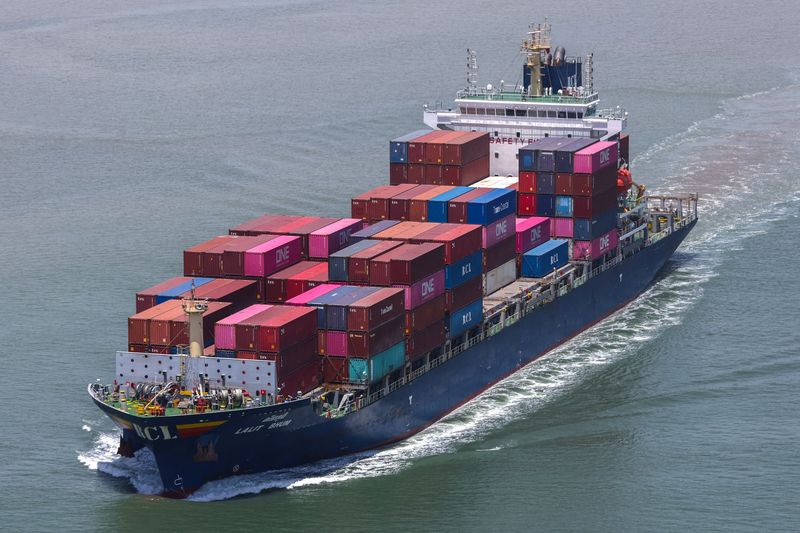
HANOI (Reuters) -Vietnam said on Friday its trade minister met with the U.S. Commerce Secretary and senators during a visit to the United States, pledging during talks on tariffs to narrow their trade gap and combat trade fraud and illegal transhipment.
Vietnam and the United States this week concluded a second round of trade negotiations, as the Southeast Asian industrial hub seeks a deal to avoid a 46% tariff rate on Vietnamese goods, imposed largely due to its big trade surplus with Washington.
During the meeting with the U.S. Commerce Secretary Howard Lutnick, Trade Minister Nguyen Hong Dien also urged the United States to recognise Vietnam as a market economy soon and to remove it from its strategic export control lists, the ministry said.
Despite Vietnam consistently being one of Asia’s fastest-growing economies in the past two decades and its multiple free-trade agreements, the United States still recognises it as a non-market economy, despite Hanoi arguing it has made sufficient reforms to justify an upgrade.
The United States is Vietnam’s largest export market and its trade surplus with Washington exceeded $123 billion last year, a trade gap Hanoi says it is committed to narrowing.
"This would bring practical benefits to both countries and help improve bilateral trade in a fairer, more harmonious and more sustainable manner," the ministry said in a statement.
Dien also separately met U.S. senators, including Ted Cruz and Steve Daines, and pledged during the meetings to promote more balanced bilateral trade.
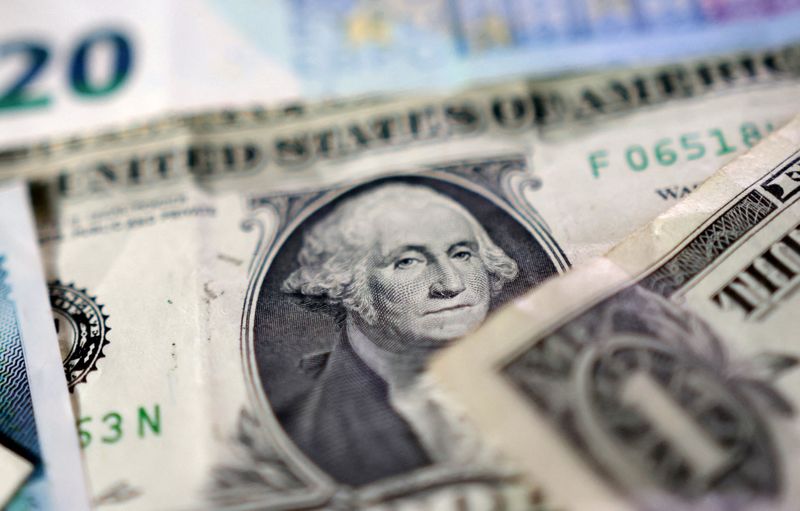
By Ankur Banerjee
SINGAPORE (Reuters) -The U.S. dollar was soft on Friday, poised to make its first weekly drop in five weeks against the euro and the yen as worries over the United States’ worsening fiscal health sent investors scurrying for safe havens.
After Moody’s last week downgraded its U.S. debt ratings, investor attention this week has honed in on the country’s $36 trillion debt pile and U.S. President Donald Trump’s tax bill that could add trillions of dollars more to it.
Dubbed by Trump as a "big, beautiful bill", it narrowly passed Republican-controlled U.S. House of Representatives and now heads to the Senate for what is likely to be weeks of debate.
The dollar index, which compares the U.S. currency against six other units, including the yen and euro, is set for 1.1% decline this week though it was little changed at 99.829 in early Asia trade.
That’s despite a steep selloff in U.S. Treasuries at the start of the week. The 30-year bond yield stayed above 5% in Asian hours on Friday, hovering near 19 month highs. It is close to October 2023’s high of 5.179%, a break past which would take it to its highest since mid-2007.
The elevated yield hasn’t underpinned the dollar as investors flee U.S. assets in a "Sell America" move similar to last month.
"What has become quite stark this week is the reaction function in broad markets to the rise in U.S. long-end Treasury yields," said Chris Weston, head of research at Pepperstone.
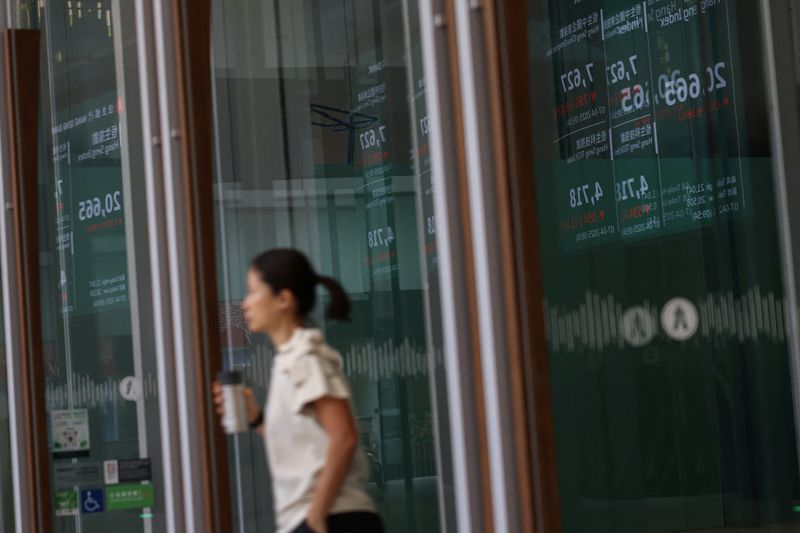
By Stella Qiu
SYDNEY (Reuters) - Asian shares made some tentative gains on Friday as beaten-down Treasuries found buyers after U.S. President Donald Trump’s tax bill narrowly passed the lower house, although debt worries still lingered.
Overnight, PMI data around the globe showed U.S. business activity picked up pace in May, which helped Wall Street rise earlier in the session before running into selling pressures and closing the day largely flat. In contrast, disappointingly weak activity in Europe dragged shares there lower. [.N]
Nasdaq futures and S&P 500 futures both were flat.
The Republican-controlled U.S. House voted by a slim margin to pass Trump’s tax cut bill, which would fulfil many of his campaign pledges, but will increase the $36.2 trillion U.S. debt pile by $3.8 trillion over the next decade.
Treasury yields, especially at the longer-dated end, have climbed on worries about U.S. fiscal health in the run-up to the passage of the bill. That was exacerbated by the decision from Moody’s last week to downgrade the U.S. credit rating, citing rising debt.
The 30-year bonds, however, did manage to find some buyers overnight with prices now at some attractive levels. Their yields fell another 1 basis point to 5.037% on Friday, having dropped 4 bps to pull away from a 19-month top of 5.161% earlier in the session.
"Maybe the certainty of getting something through has been enough to alleviate some of the fear, panic in the market, but as well as that, it is not unusual in big moves for there to be a bit of overshoot," said Ken Crompton, senior interest rate strategist at the National Australia Bank (OTC:NABZY).
"There is certainly nothing in this market move or the passage of this version of the bill that tells me there is going to be meaningful reductions in U.S. bond issuance or this broader concern about global bond supply."
In Asia, yields on super-long Japanese government bonds (JGBs) held near all-time highs on Friday. The 30-year yields have jumped 23 basis points this week and were last at 3.175%, which is being monitored closely by the Bank of Japan.
The MSCI’s broadest index of Asia-Pacific shares outside Japan inched up 0.1% on Friday but for the week it is still set for a loss of 0.4% after five weeks of gains.
Chinese blue chips and Hong Kong’s Hang Seng were largely flat.
Japan’s Nikkei rose 1% as data showed Japan’s core inflation accelerated at its fastest annual pace in more than two years in April.
In the currency market, the dollar was on the back foot again and is headed for a weekly drop of 1.2% against its major peers. The euro is set for the first weekly rise after four weeks of declines, and was up 0.2% on Friday at $1.1302. [FRX/]
U.S. Federal Reserve Governor Christopher Waller said on Thursday he still sees a path to rate cuts later this year, but noted that the outlook depends on where Trump’s tariff policy settles.
Bitcoin is set for a weekly gain of 7% at $111,524, having touched a record high of $111,965 just on Thursday.
Oil prices fell for a fourth straight session on the prospects of further output increases by OPEC+ countries. U.S. crude futures dropped 0.7% to $60.76 a barrel and were down 2.7% for the week.
Brent fell 0.6% at $64.03 per barrel.
In precious metals, gold prices were flat at $3,292 an ounce, but were set for a weekly gain of 2.8%.

By Leika Kihara
TOKYO (Reuters) -Japan’s core inflation accelerated at its fastest annual pace in more than two years in April, data showed on Friday, raising the odds of another interest rate hike by year-end.
The data underscores the Bank of Japan’s predicament of balancing price pressures from persistent food inflation against growth headwinds from U.S. President Donald Trump’s tariffs.
The core consumer price index (CPI), which excludes fresh food but includes oil prices, rose 3.5% in April from a year earlier, exceeding market forecasts for a 3.4% gain and accelerating from a 3.2% increase in March.
It was also the fastest annual pace of growth for the index since the 4.2% rise in January 2023, holding above the central bank’s 2% target for more than three years.
"Underlying inflation remained strong in April despite the slashing of public high school fees," said Marcel Thieliant, head of Asia-Pacific at Capital Economics.
"Our own view is that the persistent strength in inflation will convince the (BOJ) to hike interest rates yet again in October," contrary to the dominant market view that U.S. trade tensions will force it to hold fire this year, Thieliant said.
A Reuters poll of economists showed that the BOJ will hold rates steady through September, with a small majority forecasting a 25-basis point rate hike by year-end.
Another index stripping away both fuel and fresh food, which is scrutinised by the BOJ as a better gauge of demand-driven price pressure, rose 3.0% in April from a year earlier, the data showed. It accelerated from a 2.9% gain in March.
Food inflation accelerated to 7.0% in April from 6.2% in March in a sign many companies hiked prices at the April start of Japan’s new fiscal year. The price of rice spiked 98.6% last month from a year earlier, while that of chocolate jumped 31%.
Service-sector inflation was more moderate at 1.3% in April, compared with 1.4% in March, suggesting companies were slow in passing on rising labour costs, the data showed.
The BOJ ended a decade-long, massive stimulus programme last year and in January raised short-term interest rates to 0.5% on the view Japan was on the cusp of durably meeting its 2% inflation target.
While the central bank has signalled readiness to raise rates further, the economic repercussions from Trump’s tariffs have complicated decisions around the timing of the next rate increase.
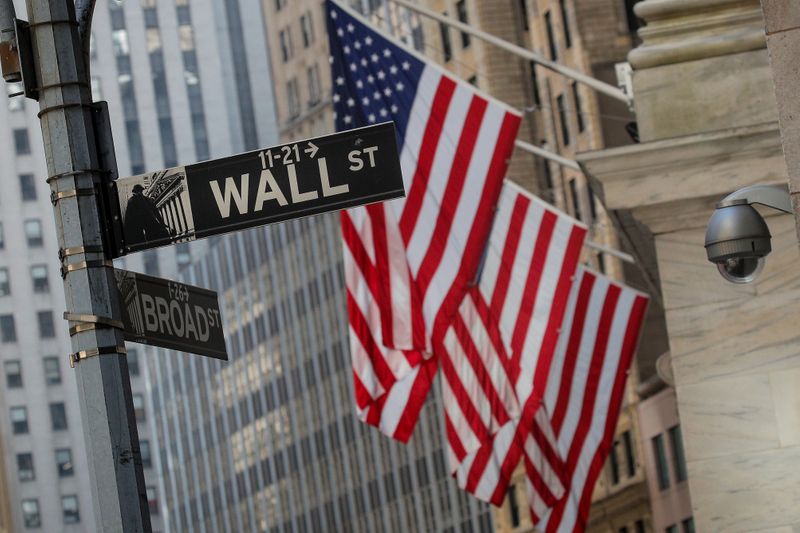
The S&P 500 closed just below the flatline Thursday following the recent rout as dip-buying in tech was kept in check by fragile sentiment amid ongoing concerns over high U.S. debt levels.
At 4:00 p.m. ET (20:00 GMT), the Dow Jones Industrial Average fell 1 point, or 0%, and the S&P 500 index gained 0.03%, while the NASDAQ Composite added 0.3%.
The main averages slumped on Wednesday, with the blue chip Dow Jones Industrial Average falling over 800 points, weighed down by a spike in U.S. Treasury yields.
Tech leads market bounce off lows
Dip-buying in tech stocks, led by Alphabet (NASDAQ:GOOGL), helped the broader market steady, with the latter adding to this weeks gains following its developer conference earlier this week.
The tech giant used the event to defend its Search product, which is under threat from newer generative AI rivals.
Elsewhere in tech, Snowflake (NYSE:SNOW) stock surged after the cloud-based data storage company raised its fiscal 2026 forecast for product revenue, betting on strong demand for its data analytics services as enterprises prioritize artificial intelligence spending.
House passes tax and spending bill
U.S. President Donald Trump’s tax bill narrowly passed the House on Thursday morning, overcoming days of political wrangling between Republicans in control of the lower chamber of Congress.
The measure passed by a narrow 215-214 margin, with all Democrats opposing the bill.
The bill now moves to the Senate, where some lawmakers are pushing for revisions, with a vote on approval expected by August.
The U.S. House Rules Committee on late Wednesday approved President Donald Trump’s expansive tax and spending bill after a nearly 22-hour session, media reports showed.
Along with the extension of 2017 tax cuts, the legislation would slash taxes charged on tips and car loans, while boosting spending on defense and border security. Reductions to key food and health programs for low-income Americans are also included in the bill.
Critics have expressed concerns over potential cuts to social programs and increased national debt. Nonpartisan analysts have estimated that the reductions could add between $3 trillion to $5 trillion to the country’s $36.2 trillion debt pile over the next decade.
Jobless claims point to still-solid labor market
Economic concerns, exacerbated by the trade turmoil over the last couple of months, have also weighed on stock markets.
The number of Americans filing new applications for unemployment benefits dropped last week, suggesting the economy maintained a steady pace of job growth in May.
Initial claims for state unemployment benefits fell 2,000 to a seasonally adjusted 227,000 for the week ended May 17, the Labor Department said on Thursday.
S&P Global’s composite purchasing managers’ index cooled to 50.6 last month, down from 53.5 in March and only slightly above the 50-point level denoting expansion.
The index’s tracker of the manufacturing sector is seen slowing to 49.9 in May, while the services gauge is expected to edge up slightly to 51.0.
Urban Outfitters shines on earnings stage
Urban Outfitters (NASDAQ:URBN) stock soaring following a stronger-than-expected quarterly report - the second straight quarter of strong revenue gains and the third consecutive quarter of accelerating EPS growth.
Analog Devices (NASDAQ:ADI) stock rose after the chipmaker beat expectations for quarterly revenue, driven by upbeat demand for its chips used in the automotive and industrial sectors.
Additionally, Nike (NYSE:NKE) stock rose 2% after the footwear retailer said it is planning to raise prices of some products from next week and will sell items on Amazon (NASDAQ:AMZN) after six years.
(Peter Nurse, Ambar Warrick contributed to this article.)
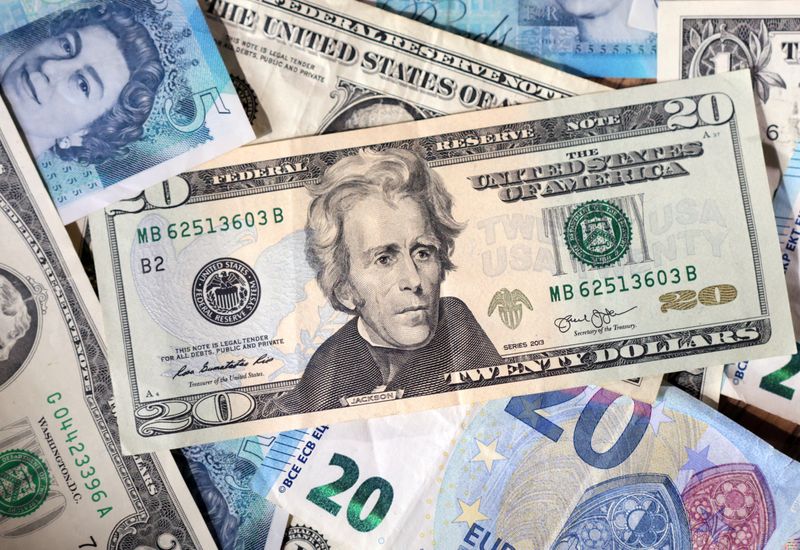
By Kevin Buckland
TOKYO (Reuters) -U.S. fiscal concerns and a tepid auction of Treasury bonds slapped the dollar to a two-week low versus the yen on Thursday, while President Donald Trump tried to push his sweeping spending and tax-cut bill through Congress.
The lacklustre 20-year bond sale reinforced the "Sell America" narrative, weighing on not just the dollar but Wall Street as well, with traders already jittery after Moody’s cut the U.S. triple-A credit rating last week.
Bitcoin pushed to a fresh all-time high on Thursday, partly as investors sought out alternatives to U.S. assets. Gold also benefitted, reaching an almost two-week top of $3,325.79 and putting it within $175 of April’s record peak.
"Despite falling equities, the U.S. dollar has not seen traditional safe-haven demand, with gold, the euro and the yen instead benefiting," said James Kniveton, a senior corporate FX dealer at Convera.
In the process of getting Trump’s bill to the Senate, "fiscal restraint could emerge, but market sentiment suggests scepticism," he said.
Republicans are still divided over the details of the tax legislation. Hardliners within the party continue to argue the bill does not sufficiently cut spending, House Speaker Mike Johnson said.
The bill would add $3 trillion to $5 trillion to the country’s debt, according to nonpartisan analysts.
The dollar slipped to 143.27 yen early in Asia, the weakest level since May 7.
It turned lower despite an early pop of as much as 0.5% after Japanese Finance Minister Katsunobu Kato said he did not talk about foreign-exchange levels in his discussions with U.S. Treasury Secretary Scott Bessent on the sidelines of the Group of Seven meetings in Canada.
However, the short-lived response suggests investor suspicions run deep that the White House wants a weaker dollar versus many Asian currencies.
South Korea’s currency jumped to the strongest level since November 4 on Wednesday at 1,368.90 per dollar after the Korea Economic Daily reported that Washington had demanded that Seoul come up with measures to boost the won. It was trading a touch weaker at 1,377.00 on Thursday.
The euro was last flat at $1.1330, after rising 0.4% on Wednesday for a third straight session of gains.
Sterling was steady at $1.3426.

By Lucy Craymer and Praveen Menon
WELLINGTON (Reuters) -New Zealand on Thursday set new spending for the current fiscal year at its lowest in a decade, keeping a tight rein on its fiscal purse even as it warned of softer GDP growth and a "trade shock" to the economy from the global tariff war.
The South Pacific nation’s economy contracted last year and its recovery has been hobbled by tepid consumption and heightened uncertainty over sharp shifts in U.S. trade and economic policies.
“The global situation is concerning,” New Zealand Finance Minister Nicola Willis said following the release of the 2025 budget in Wellington. “We can’t control what other countries do with their tariffs, what we can control is our conditions.”
As previously flagged, the government set new operating spending for the current fiscal year ending June 30 at NZ$1.3 billion, the smallest amount in a decade as it remains focused on fiscal prudence despite the rising external headwinds to growth.
The Treasury downgraded its expectation for economic growth in the new financial year, citing the global trade war that has raised challenges for policymakers worldwide.
“Actions by the United States to impose near universal tariffs and counter measures by some countries have led international agencies to lower their global growth forecasts,” the Treasury said in its budget statement. “The global trade shock is hitting a New Zealand economy that is recovering from last year’s contraction."
TIGHT FISCAL PURSE
Since coming to power in late 2023, the centre-right government has tightened the purse strings in an effort to cut what it sees as wasteful spending but critics say the fiscal discipline is undermining an economy at a time of rising external risks.
“The government is not promising that today’s Budget will solve all New Zealanders problems. But we do promise that the decisions we are taking now will set our country up for a better future,” Willis said in her budget speech.
The finance minister pledged to boost spending in areas such as defence, foreign affairs and health and overhauled the Kiwisaver national pension fund.
The government forecast a budget deficit of NZ$14.74 billion, narrower than a deficit of NZ$17.32 billion its half-year fiscal update in December. It does not expect to return to surplus over the forecast five-year period if its nationwide accident insurance scheme is included.
Gross domestic product growth is expected to slow to 2.9% in the 12 months ended June 30, 2026, down from forecast growth of 3.3% at the December update. For the same period, it expects inflation to track at 2.1%, unchanged from the prior forecast.
Net debt excluding advances was forecast to peak at 46% of gross domestic product (GDP) in 2027/28. In December, the government had expected it to peak at 46.5% of GDP in 2026/27.
Prime Minister Christopher Luxon said tough choices had to be made on what the government spent money on.
“We are confident we have put Kiwis hard-earned taxes where they will have the most impact,” Luxon said.
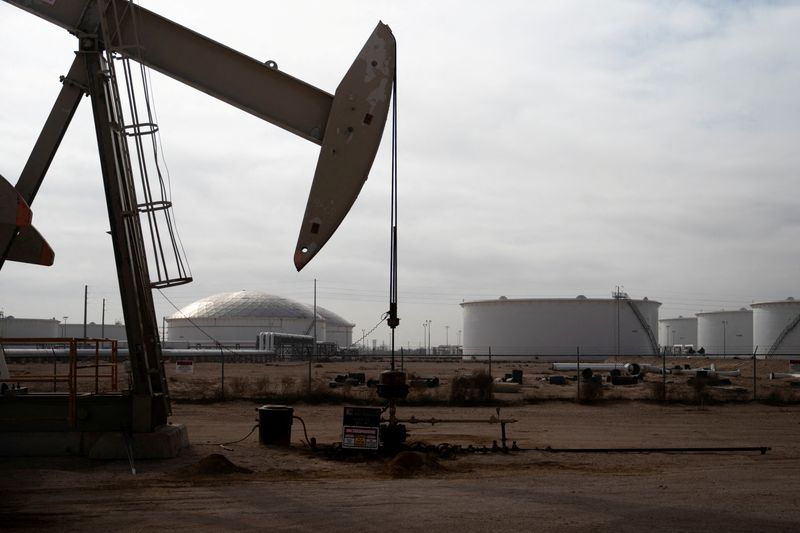
By Yuka Obayashi
TOKYO (Reuters) - Oil prices eased on Thursday as unexpected builds in U.S. crude and fuel inventories raised demand concerns, while investors stayed cautious, focusing on renewed Iran-U.S. nuclear talks.
Brent futures slipped 33 cents, or 0.5%, to $64.58 a barrel by 0038 GMT, while U.S. West Texas Intermediate crude dropped 32 cents, or 0.5%, to $61.25. Both benchmarks lost 0.7% on Wednesday.
U.S. crude and fuel inventories posted surprise stock builds last week, the Energy Information Administration said on Wednesday, as crude imports hit a six-week high and gasoline and distillate demand slipped. [EIA/S]
Crude inventories rose by 1.3 million barrels to 443.2 million barrels in the week ended May 16, the EIA said. Analysts in a Reuters poll had expected a 1.3 million-barrel draw.
"While rising U.S. inventories have raised concerns, some investors expect the summer driving season starting after Memorial Day weekend to draw down stocks, limiting further downside," said Hiroyuki Kikukawa, chief strategist of Nissan (OTC:NSANY) Securities Investment, a unit of Nissan Securities.
"Traders remain cautious, avoiding large positions as they assess conflicting signals over U.S.-Iran nuclear talks and a media report of potential Israeli strikes on Iranian nuclear facilities," he added, predicting WTI to trade between $55 and $65 for the time being.
The fifth round of nuclear talks between Iran and the United States will take place on May 23 in Rome, Oman’s foreign minister said on Wednesday.
CNN reported on Tuesday that U.S. intelligence suggests Israel is preparing to strike Iranian nuclear facilities, citing multiple U.S. officials and adding that it was not clear whether Israeli leaders have made a final decision.
Iran is the third-largest producer among members of the Organization of the Petroleum Exporting Countries and an Israeli attack could upset flows from the country.
U.S. and Iran have held several rounds of talks this year over Iran’s nuclear programme, while U.S. President Donald Trump has revived a campaign of stronger sanctions on Iranian crude exports.
Meanwhile, Kazakhstan’s oil production has risen by 2% in May, an industry source said on Tuesday, defying OPEC+ pressure to reduce output.

